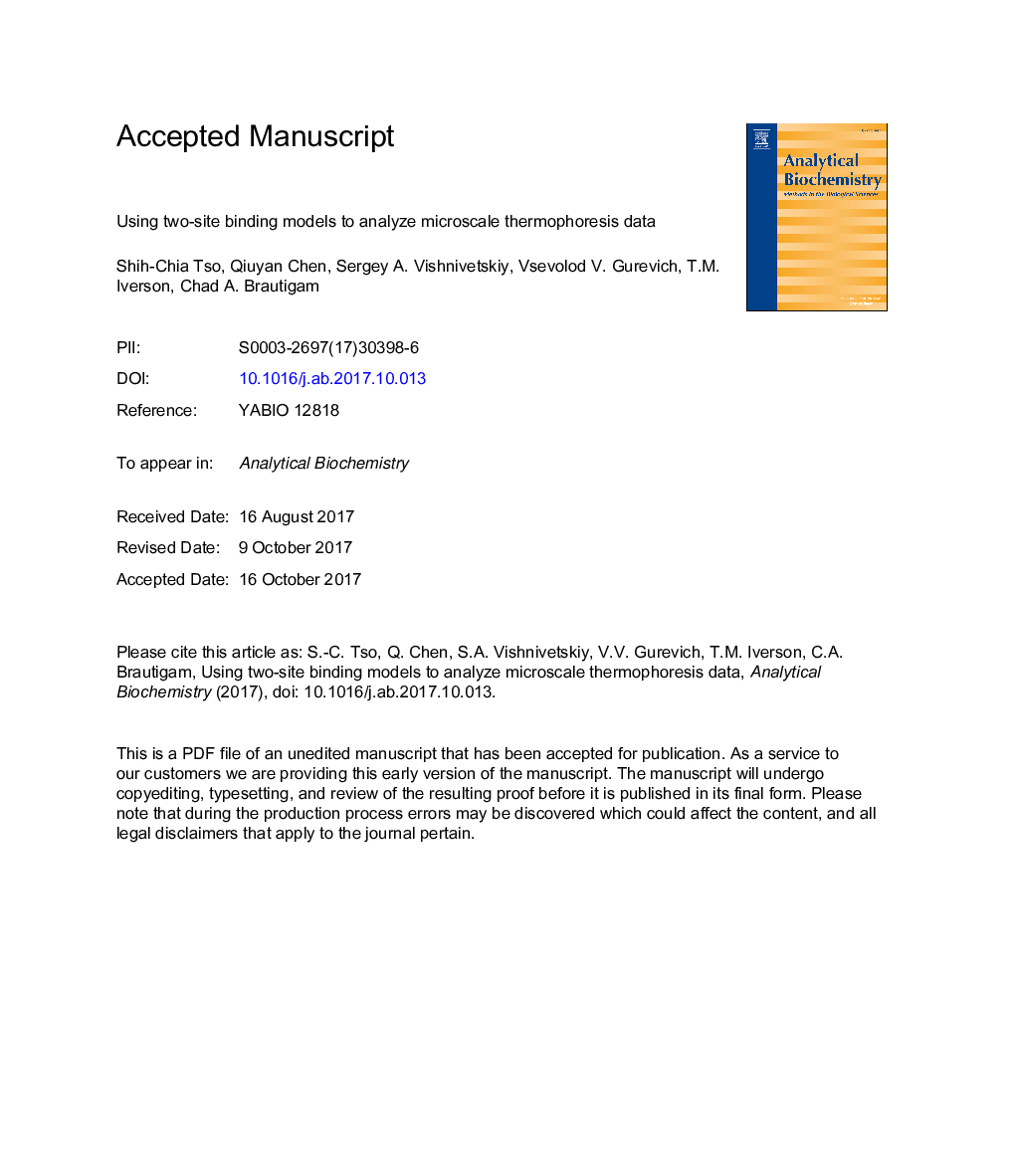| Article ID | Journal | Published Year | Pages | File Type |
|---|---|---|---|---|
| 7557151 | Analytical Biochemistry | 2018 | 56 Pages |
Abstract
The emergence of microscale thermophoresis (MST) as a technique for determining the dissociation constants for bimolecular interactions has enabled these quantities to be measured in systems that were previously difficult or impracticable. However, most models for analyses of these data featured the assumption of a simple 1:1 binding interaction. The only model widely used for multiple binding sites was the Hill equation. Here, we describe two new MST analytic models that assume a 1:2 binding scheme: the first features two microscopic binding constants (KD(1) and KD(2)), while the other assumes symmetry in the bivalent molecule, culminating in a model with a single macroscopic dissociation constant (KD,M) and a single factor (α) that accounts for apparent cooperativity in the binding. We also discuss the general applicability of the Hill equation for MST data. The performances of the algorithms on both real and simulated data are assessed, and implementation of the algorithms in the MST analysis program PALMIST is discussed.
Keywords
Related Topics
Physical Sciences and Engineering
Chemistry
Analytical Chemistry
Authors
Shih-Chia Tso, Qiuyan Chen, Sergey A. Vishnivetskiy, Vsevolod V. Gurevich, T.M. Iverson, Chad A. Brautigam,
